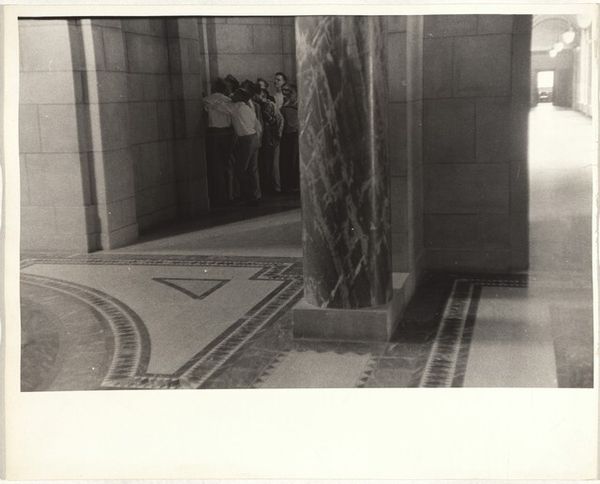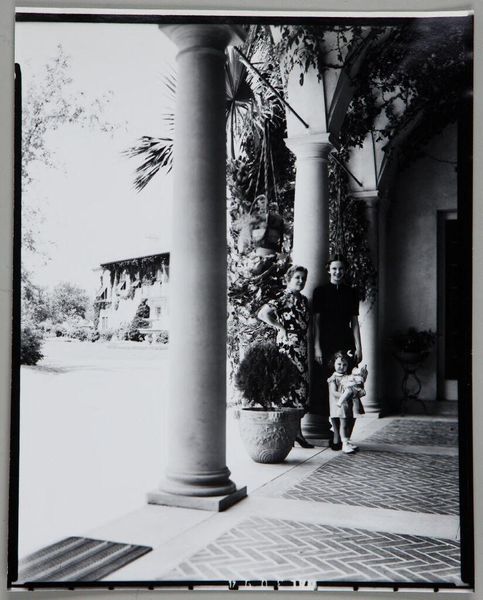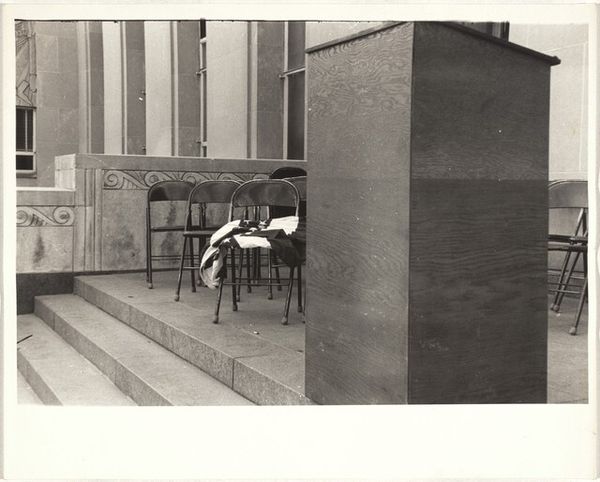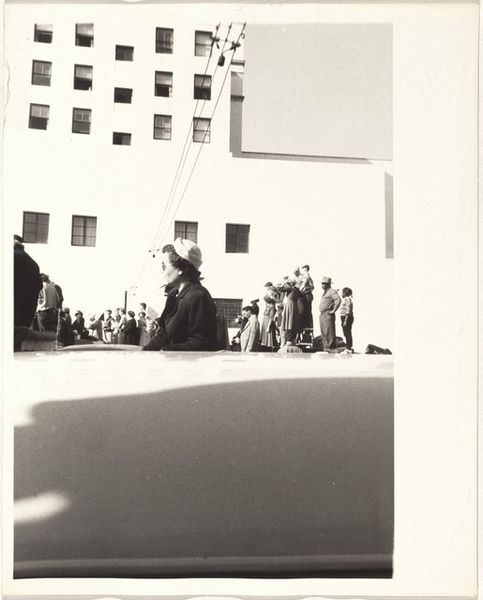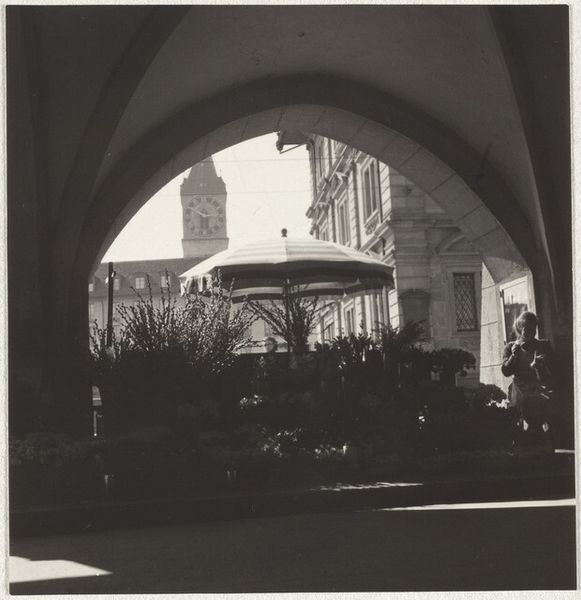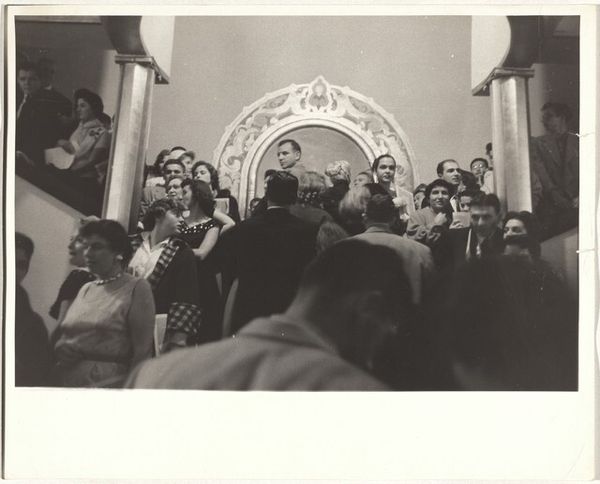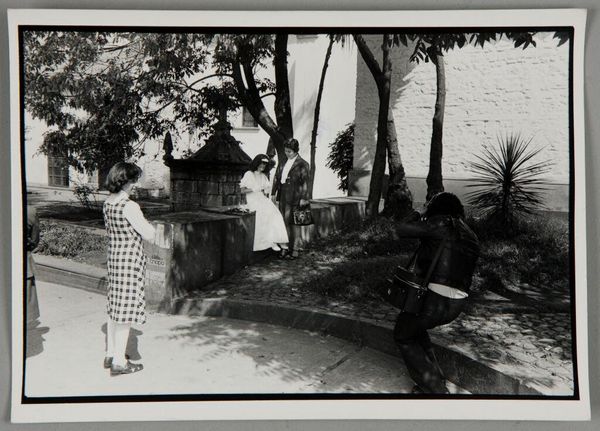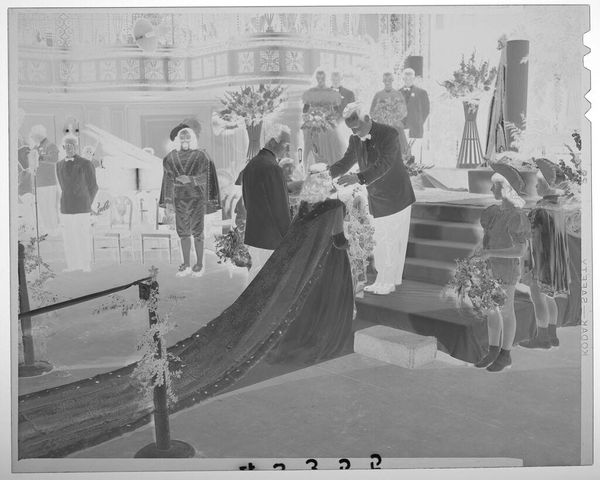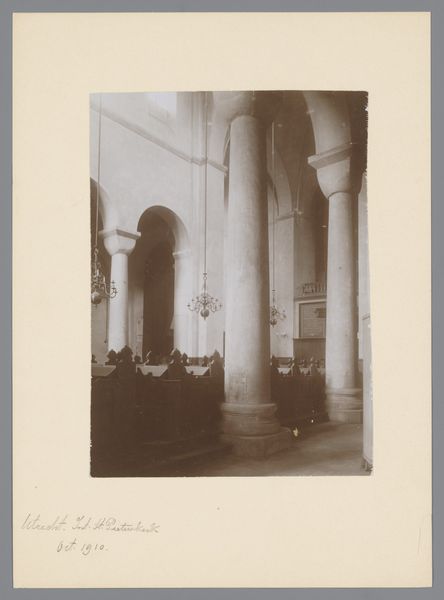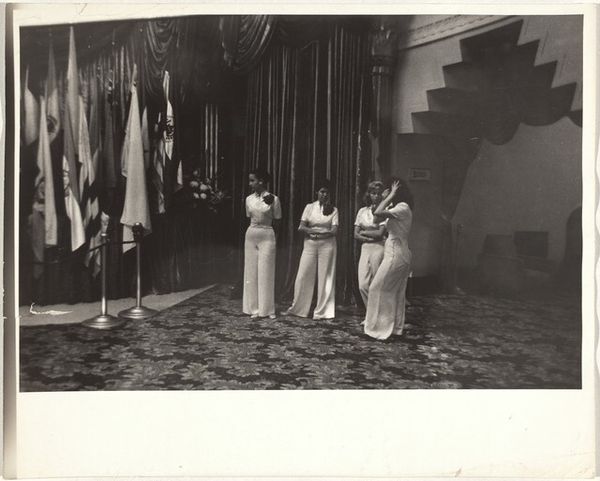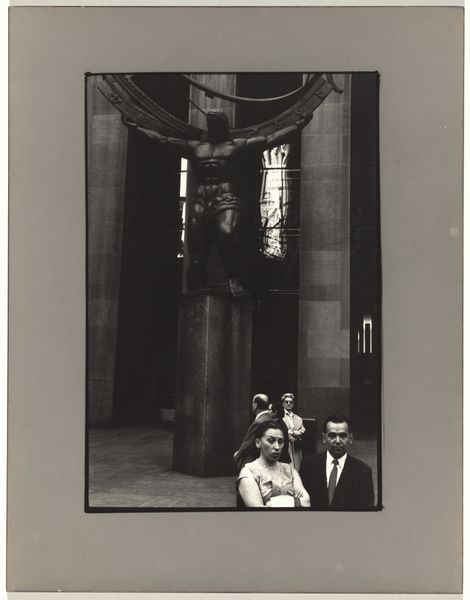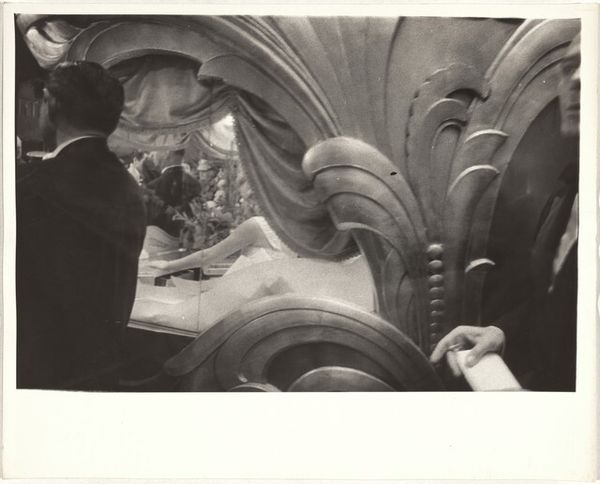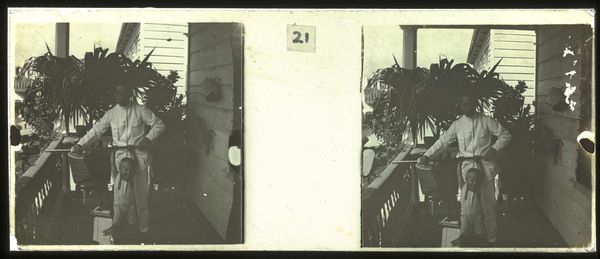
#
photo of handprinted image
#
light pencil work
#
photo restoration
#
ink paper printed
# print
#
wedding photography
#
old engraving style
#
wedding around the world
#
old-timey
#
pen-ink sketch
#
celebration photography
Dimensions: sheet: 20.2 x 25.3 cm (7 15/16 x 9 15/16 in.)
Copyright: National Gallery of Art: CC0 1.0
Editor: This is Robert Frank’s “Nuns—Los Angeles,” a print from 1956. There’s almost a stark contrast in the image; the dark figures of the nuns ascending the stairs, juxtaposed with the woman in the light jacket seemingly hurrying away. How do you interpret this work from a formalist perspective? Curator: Observe how Frank uses stark contrasts in light and shadow to create a visual tension. The composition is carefully arranged; the nuns form a dark, receding mass, while the woman provides a point of visual opposition. Note the geometry, the lines of the staircase, the railing – how do these elements contribute to the overall structure? Editor: The railing almost seems to divide the image. Is there any symbolism there? Curator: Perhaps, but consider its purely formal function first. It creates a strong diagonal line, bisecting the visual space. What effect does that have? Editor: It creates a sense of dynamism, of movement and division, heightening the contrast you mentioned earlier. Curator: Precisely. And what about the tonal gradations? Notice the rough texture of the print, the limited palette. Does this simplicity enhance or detract from the visual impact, in your opinion? Editor: I think it enhances it, it adds to the overall mood. It really focuses on the shapes and how the image is organized. Curator: The very limitations of Frank’s chosen aesthetic – his conscious use of light and shadow and simple geometric shapes – forces us to confront the raw essence of the composition itself, to see its intrinsic structural elegance, doesn't it? Editor: It does. I appreciate how looking closely at the lines and shapes makes the photo more about those pure elements and less about its story. Curator: Indeed. It's in the structure itself where we find the photograph’s inherent meaning, and from where its power originates.
Comments
No comments
Be the first to comment and join the conversation on the ultimate creative platform.

